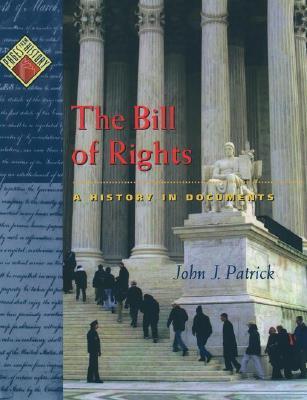
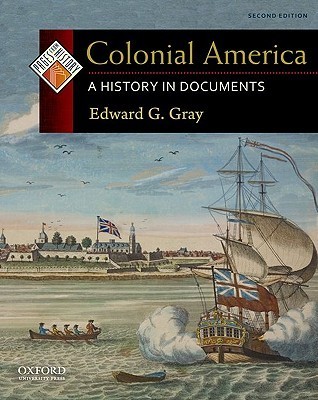
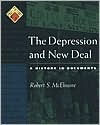
Pages from History
Series · 13
books · 1999-2016
Books in series

#2
The Bill of Rights
A History in Documents
2003
The Bill of Rights is an extraordinary collection of original documents, carefully introduced and put into context by historian John Patrick, that traces the origins of the Bill of Rights back to England's Magna Carta and its legal traditions through to present day controversies over freedoms of speech, religion, bearing arms, assembling, and more. Examples of challenges to the Bill of Rights
\* The Sedition Act of 1798, which made it illegal to express criticism of the U.S. government
\ The internment of Japanese Americans during World War II \ George W. Bush's Executive Order of November 13, 2001, expanding the government's authority against individuals when terrorism is suspected.

#3
Colonial America
A History in Documents
2002
By examining the lives of the colonists through their own words—in diaries, letters, sermons, newspaper columns, and poems—Colonial A History in Documents, Second Edition reveals how immigrants, despite their vast differences, laid the foundations for a new the United
States.
One of the earliest documents is Sir Walter Ralegh's account of the failed colony at Roanoke, the first British settlement. The harrowing experiences of the first colonists are recorded in Captain John Smith's tale of Indian attack and starvation at Jamestown and in a young Massachusetts colonist's
letter to his English parents pleading for supplies. A Catawba Indian's letter to the governor of South Carolina describing a devastating smallpox epidemic is evidence of the even greater toll that war and illness had on the Native Americans. From these difficult beginnings, the colonies developed
into vibrant communities. A poem by a young Englishman sentenced to be deported is the story of one laborer who helped build the colonies. An exchange of letters between friends about choosing a husband provides insight into colonial family life. The title page of a book about evil spirits and a
Mohawk Indian's telling of the creation myth demonstrate the diversity of colonial religious beliefs.
American colonists were also guided by secular codes of behavior. Young George Washington's exercise book filled with rigid rules of conduct exemplifies the manners and mores of the colonies' future leaders. A picture essay about the material world gathers objects ranging from military artifacts to
fine furnishings to reveal how the colonies evolved from rough outposts to near-independent states. Using such historical evidence, Colonial America provides a captivating look at the textured lives of the people who founded the United States.
The second edition includes a new chapter, "The Tumult of Empire," on the imperial tensions that erupted during this period and the internal strife within the colonies, as demonstrated in the violence of Bacon's Rebellion, Governor Andros' harsh ruling over the Dominion of New England, the
overturning of provincial regimes in response to William and Mary's Glorious Revolution, and the golden age of piracy. Twenty-eight new visual documents enrich this edition, including a map of Native American villages, a proclamation on the destruction of forests, and Hippopotamus hide whips used on
slaves. Ten new sidebars provide shorter documents, such as John Winthrop's journal entry on the effects of the English Civil War in Massachusetts, a 1730 poem about growing Philadelphia, and a 1743 newspaper advertisement aimed at German-speaking colonists. There is a new note on sources and
interpretation and there are updates to the further reading and websites recommendations.

#4
The Depression and New Deal
A History in Documents
1999
The Depression and New Deal is a collection of primary sources documenting American life during the longest and deepest economic collapse in American history. From the prosperity and rampant consumerism of the 1920s, the book moves forward to cover the double shock of the stock market crash
and dust bowl and then on to the recovery efforts of Roosevelt's New Deal. Some of the most revealing testaments to the times-including songs by Woody Guthrie, articles from sources as diverse as Fortune magazine and the communist periodical New Masses, murals and posters sponsored by the Works
Progress Administration, excerpts from literary classics such as The Grapes of Wrath and selections from Eleanor Roosevelt's "My Day" column-have been assembled to provide a well-rounded portrait of the age.
The battle among conflicting political and economic forces is brought to life with political cartoons, Roosevelt's "Forgotten Man" radio address and first inaugural address, Supreme Court decisions, newspaper editorials, text from the National Labor Relations Act, and many other documents. Some of
the most compelling elements of this history record the impact of the depression on ordinary people. The experiences of Americans of both sexes, all ages, and various racial and ethnic groups are explored through documents such as Farm Security Administration photographs, interviews, letters to the
Roosevelts, and the memoirs of a "southern white girl." A special section of Hollywood film stills demonstrates how the changing values of the nation were reflected in popular culture. Renowned historian Robert McElvaine provides expert commentary linking the documents into a fascinating and
seamless narrative.
Textbooks may interpret history, but the books in the Pages from History series are history. Each title, compiled and edited by a prominent historian, is a collection of primary sources relating to a particular topic of historical significance. Documentary evidence including news articles,
government documents, memoirs, letters, diaries, fiction, photographs, and facsimiles allows history to speak for itself and turns every reader into a historian. Headnotes, extended captions, sidebars, and introductory essays provide the essential context that frames the documents. All the books are
amply illustrated and each includes a documentary picture essay, chronology, further reading, source notes, and index.
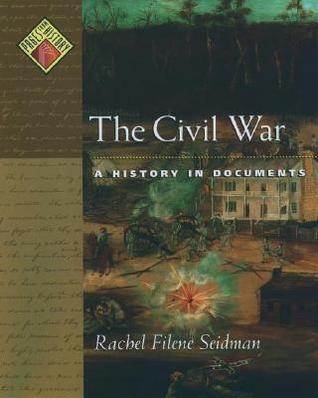
#5
The Civil War
A History in Documents
2001
The Civil War was not only a stunning event in military history; it defined the American people by forcing them to grapple with the founding principles of the nation. Rachel Seidman brings together an array of primary sources from the antebellum period, the war, and Reconstruction to provide a well-rounded account of this pivotal era. Political debates and military developments may occupy the historical foreground, but it is the letters, diary entries, memoirs, and testimony of blacks, Native Americans, women, children, farmers, and foot soldiers in the richly textured background that bring the Civil War to life. Ex-slave Frederick Douglass' abolitionist speeches and writings contrast with Southern magazine editor James DeBow's defense of the slave system to set the political conflict in a national context. Northern traveler Caroline Seabury's heartbreaking letter about a slave auction and Southern slave mistress Ella Thomas' conflicted diary entries about her servant Isabella
detail the daily brutality of slavery. Confederate general James Longstreet's report of the Battle of Gettysburg and Union general William T. Sherman's letter to the leaders of Atlanta document tactics introduced in the Civil War, while letters between soldiers and their families record the anguish and the courage on the battlefield and at home. A picture essay entitled "Images of War" graphically demonstrates the devastation wrought by the war through photography—a new medium in the 1860s that profoundly changed American attitudes about warfare.
Despite the South's surrender, violence and conflict continued during Reconstruction. The 13th Amendment abolished slavery, but state-sanctioned Black Codes limited African American freedoms. At the cost of some 620,000 lives, the battles had ended, but America's struggle with the legacy of slavery was only beginning.
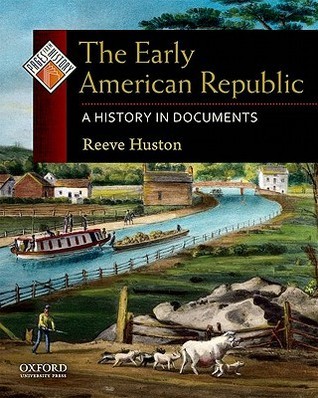
#8
The Early American Republic
A History in Documents
2005
The early years of the American republic witnessed wrenching conflict and change. Northerners created an industrial order, which brought with it troubled relationships at work and within families. White southerners extended plantation slavery while the anti-slavery movement grew above the Mason-Dixon line. In the West, Native Americans battled newly arrived yeomen, entrepreneurs, and planters for control over land. Throughout the young nation numerous groups—African Americans, poor white men, women—fought for full citizenship, while others vigorously opposed their bids for equality. The Mexican-American War (1846-1848) marked the end of the period with violence that prefigured the Civil War.
Using such primary sources as diaries, letters, political cartoons, photographs, speeches, engravings, newspaper debates, paintings, and the memoirs of participants, The Early American Republic: A History in Documents recreates the drama of that era. Englishwoman Rebecca Burlend recounts the hardships and victories of her life on the Illinois frontier. In a letter to an ally, Thomas Jefferson explains his Indian policy, while the Native American leader Tecumseh makes his case for Indian unity against white Americans. James Henry Hammond, a wealthy planter, instructs his overseer on how to manage slaves, and Joseph Taper writes his former master about the freedom he enjoys after escaping to Canada. A blackface minstrel tune and Frederick Douglass' account of being beaten up by white ship workers illustrate the emergence of a virulent form of racism. A list of instructions from New York Democratic leaders shows how parties drew ordinary voters into politics, and Congressional speeches reveal the fierce emotions that fueled the sectional crisis. A picture essay explores the complexities of American families in ten group portraits. By weaving these historical documents together, Reeve Huston conveys the challenges and culture of the foundational years of the nation.
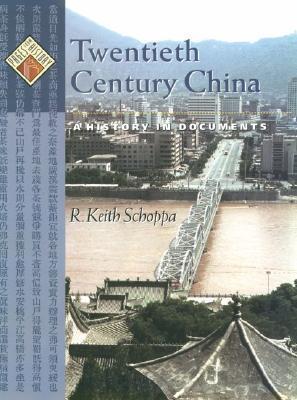
#10
Twentieth Century China
A History in Documents
2004
In its period of slow decline from the late 18th into the early 20th century and throughout its 20th century revolution, one of the most important problems facing individual Chinese and China as a nation was choosing appropriate political, social, cultural, and economic identities as contexts
and situations changed. This documentary history of 20th century China begins with the turn-of-the-century Boxer uprising to set the stage for understanding the choices at stake for 20th century Chinese. It then focuses on the always-dramatic choices of identity that have continually confronted the
Chinese. In many cases these choices have meant life or death. Above all, this is a story of the people whose choices propelled modern Chinese history. It is a dramatic tale, often bloody and violent, alternately soaring with hope and plunging into bleak despair. It compels our interest because of
its importance for the world today; because it is one of world history's greatest revolutions; and because it provides an extraordinarily interesting study of the processes that an ancient culture undergoes in transforming itself into that which we call "modern."
Twentieth-Century A History in Documents uses an exceptional range of primary sources, including government edicts, political cartoons, poetry, political manifestos, essays, fiction, magazine covers and advertisements, wills, trial transcripts, speeches, statistics, press releases, and even
Chinese rock lyrics. The entire book is profusely illustrated with graphics that themselves serve as documents, and there is also a picture essay. Back matter will include a chronology, further reading, and index.
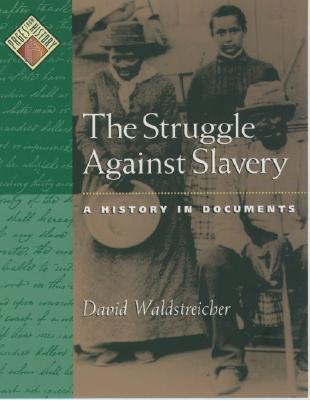
#11
The Struggle against Slavery
A History in Documents
2002
From slave ships to plantations to freedom, The Struggle Against Slavery traces the remarkable history of the heroic fight to end slavery, from its North American beginnings in the early 1600s to its violent demise in the mid-1800s with the Civil War. Captured in their own words from transcripts, diaries, memoirs, newspaper clippings, drawings, and other documents are the stories of how slaves and free blacks fought against the dehumanization of slavery by developing anti-racist arguments, creating their own institutions, physically escaping, and fighting with weapons. An exceptional social, political, and cultural history of the period, The Struggle Against Slavery is filled with stirring tales of survival and strength, bringing to life the African-American experience in early America.
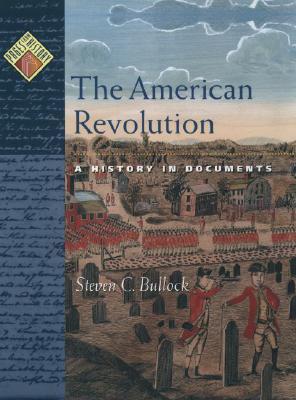
#13
The American Revolution
A History in Documents
2003
The American Revolution vividly illustrates through a collection of fascinating primary documents how, in the space of a few hundred years, contented colonists—the majority of whom were transplanted English citizens—would form an independent country that could challenge the greatest world power of the time—and win. The American Revolution explores the colonies' break with Great Britain, the resulting war to gain independence, and the struggle to create a successful government for the new United States. Steven C. Bullock turns to such documents as Common Sense, the Declaration of Independence, diaries, newspaper debates, slave petitions, and a pictorial essay on Paul Revere, showing that the words and actions of common men as well as great men played important roles in making the Revolution not just a coup d'État, but a genuine change that shook the foundations of authority and dramatically changed American society.
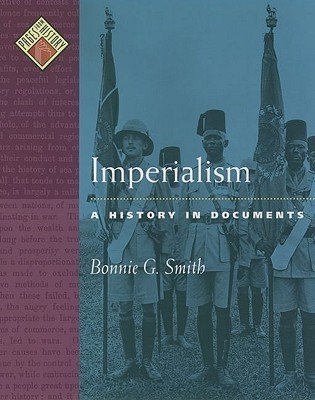
#16
Imperialism
A History in Documents
2000
We talk about living in a global era, but the groundwork for it was laid more than a century ago. By the late 19th century, Europe, Japan, and the United States had taken control of most of the world. Travel and trade between home countries and colonies sent goods and technology to even the most remote corners of the globe. An English lady's letter home on smallpox inoculations in Turkey, an American missionary's account of the forcible collection of rubber in Belgian Congo, and a Chinese official's regulations for European merchants are among the primary sources that Bonnie Smith has assembled to demonstrate the advantages and drawbacks of the new economy. Society, education, and the environment also underwent massive changes, as witnessed by the selection of excerpts from an exam in a German missionary school in Togo and British reports on the devastation of entire forests in Burma.
Imperial growth did not come without a price. A Japanese document outlining governance in Korea and U.S. President Benjamin Harrison's defense of the annexation of Hawaii illustrate the militant nationalism, religious intolerance, and pseudo-scientific racist theories used to justify the brute force of colonial rule. The colonized nations fought back-a popular Chinese poem in praise of the Boxers' opposition to foreign rule attests to this rebellious spirit, and a Moroccan's shock at "barbaric" European mores illustrates the conquered's view of the conquerors. A picture essay, "Mixture," showcases the amalgamation of global cultures through photographs of buildings, furniture, advertisements, sporting events, and sculpture. Bonnie Smith vividly captures the booming expansion of a flawed political system and expertly links the documentary evidence with informed commentary and prefatory essays to each chapter.
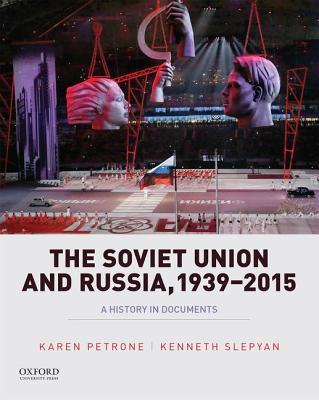
#17
The Soviet Union and Russia, 1939-2015
A History in Documents
2016
This volume in the Pages from History series explores the history of the Soviet Union from the eve of World War II through its collapse and the years of transition from socialism to capitalism. The Soviet Union and Russia, 1939-2015: A History in Documents not only details the political chronology of changes in Soviet leadership, but also devotes significant attention to the social, economic, and cultural dimensions of everyday Soviet life. It highlights actions and decisions of the Soviet leadership while addressing popular initiatives and responses that shaped the environment in which the leadership operated. The sources—ranging from official documents and pronouncements, to clandestine opposition to the government, to artifacts of everyday life and popular culture—capture Soviet and post-Soviet life in all of its variety and complexity, challenging the stereotype of a monolithic Soviet society. Headnotes, extended captions, sidebars, introductory essays, and a robust photo
program provide an essential context that frames the documents.
#18
Women's Rights in the United States
A History in Documents
2015
Women's Rights in the United States: A History in Documents uses a diverse collection of documents—including manifestoes, letters, diaries, cartoons, broadsides, legal and court records, poems, satires, advertisements, petitions, photographs, leaflets, maps, posters, autobiographies, and newspapers—to examine major themes in the history of women's rights and women's rights movements in the U.S. The documents encompass the experiences of women from a wide range of racial, ethnic, class, economic, sexual, marital, and social groups. The book covers such topics as organized social movements; changing definitions of rights and different women's access to rights; divisions among women within women's rights movements; global contexts for women's rights activism; and the question of what it means for women and men to be "equal." Each chapter includes an introductory essay, and each document has a headnote or long caption. A picture essay illuminates how both suffragists and anti-suffragists employed cartooning to articulate their political positions.
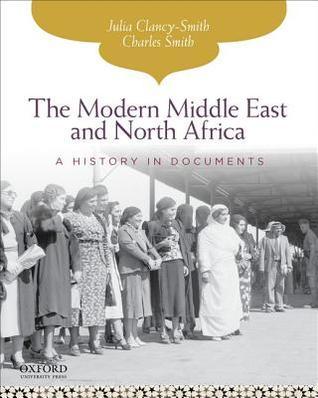
#21
The Modern Middle East and North Africa
A History in Documents
2013
Winner of the Middle East Studies Association 2013 Undergraduate Education Award
Utilizing a mix of documents—including photographs, posters, diaries, diplomatic records, archival sources, and literary works—The Modern Middle East and North A History in Documents is structured around an underlying theme of unity in diversity. This theme helps to offset students' stereotypical image of the Middle East and North Africa as an undifferentiated, monolithic, and unchanging part of the world inhabited mainly by terrorists and religious fanatics. Compiled and edited by two prominent historians, Julia Clancy-Smith and Charles Smith, the book's approach offers a compromise between conventional political and diplomatic histories and those focusing on social and cultural history. The authors demonstrate how the Middle East and North Africa have participated in and shaped the grand currents of global history during the past two centuries. Headnotes, extended captions, sidebars, introductory essays, and a robust photo program (including a documentary picture essay
devoted to women and gender) provide an essential context framing the documents.
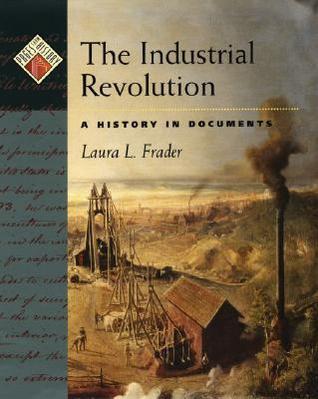
#23
The Industrial Revolution
A History in Documents
2004
The Industrial A History in Documents uses a wide variety of primary source documents to chronicle a period of great international social and technological change that began in England in the 18th century. Improvements were made to the steam engine that meant that many tasks that had been done by hand in the past could be mechanized. With locomotives and steamships, goods could now be transported very quickly and within a reasonably predictable time. Other changes included the use of iron and steel, invention of new machines that increased production (including the spinning jenny), development of the factory system, and important developments in transportation and communication (including the telegraph). Thay all led to agricultural improvements, a wider distribution of wealth, political changes reflecting the shift in economic power, and sweeping social changes. This book relies on primary sources such as personal diaries, advice books, poems, business reports, letters, photos, and essays to tell the story behind this rapidly changing period and its far-reaching effects.
Authors
Reeve Huston
Author · 2 books
Reeve Huston is Associate Professor of History at Duke University.
Charles Smith
Author · 4 books
Librarian Note: There are more than one author in the Goodreads database with this name.
Robert S. McElvaine
Author · 6 books
Robert S. McElvaine is Elizabeth Chisholm Professor of Arts and Letters and Chair of the Department of History at Millsaps College in Jackson, Mississippi.
David Waldstreicher
Author · 6 books
David Waldstreicher, editor, is Distinguished Professor of History at the Graduate Center, City University of New York, and the author of Slavery’s Constitution: From Revolution to Ratification (2009); Runaway America: Benjamin Franklin, Slavery, and the American Revolution (2004); and In the Midst of Perpetual Fetes: The Making of American Nationalism, 1776–1820 (1997). As editor, his books include A Companion to John Adams and John Quincy Adams (2013).
Laura L. Frader
Author · 1 book
Laura Levine Frader